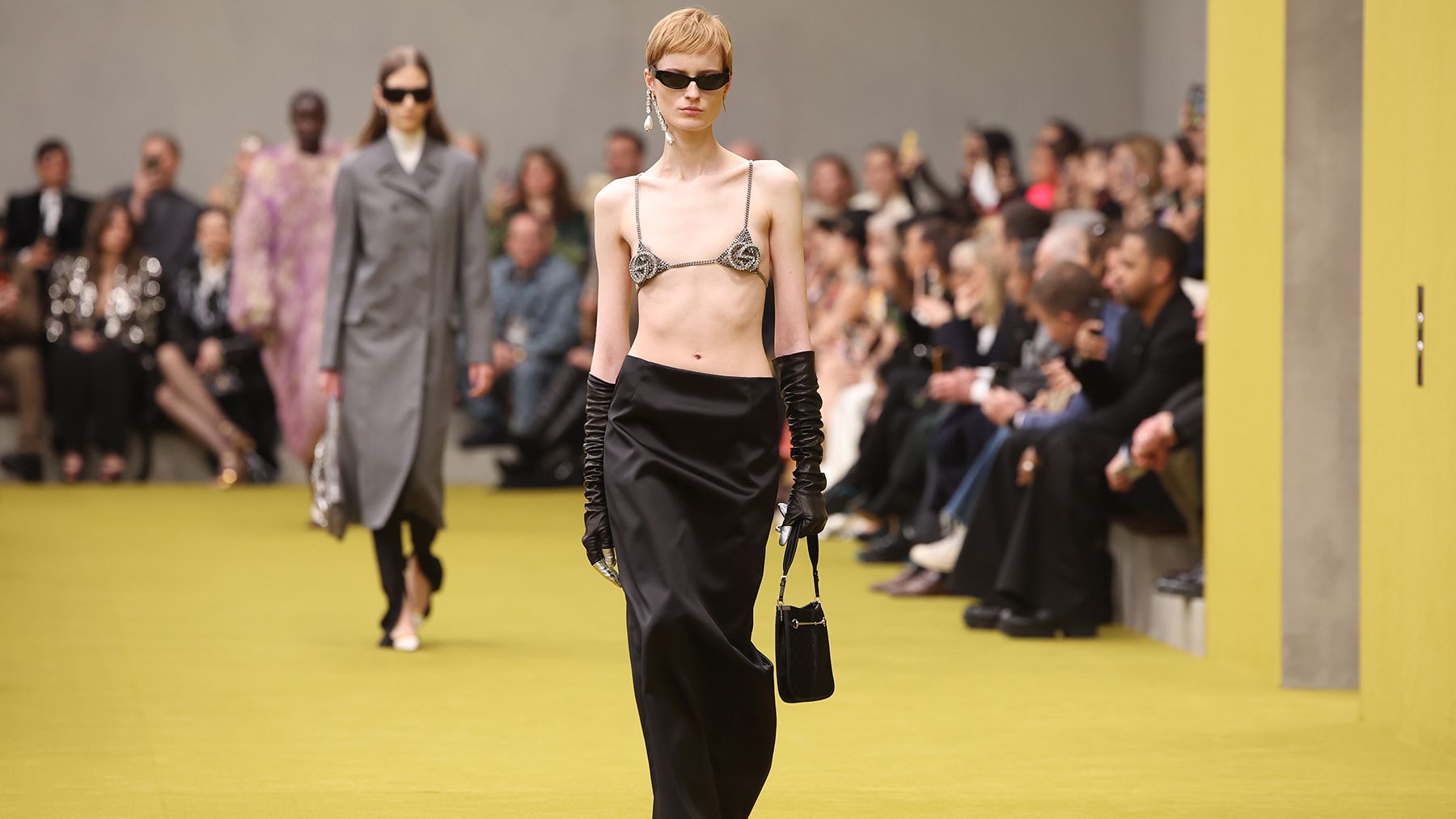
MILAN — Gucci was a surprise. We had heard that the brand’s need for a calmer, more classic approach to design had precipitated the departure of the shamanistic genius Alessandro Michele, and his studio would be delivering transitional collections until the new creative director Sabato De Sarno’s first show in September. “Transitional” normally suggests something bland, half-assed, but that’s not what happened on Friday. Yes, the collection was a mess, with a let’s-try-anything vibe, but here that suggested less desperation than a peculiarly joyful letting go. The press notes told us that there are people in the studio who worked for Tom Ford nearly thirty years ago. They’d weathered the Giannini Interregnum (consigned by this collection, at least, to the trashcan of history) and the Michele Renaissance, and this was their leadup to “a new chapter.” A moment to reflect on what was, what might have been, and what will be.
The only thing half-assed was the complexity of the staging, though it certainly suggested nothing short of full commitment to Gucci’s nowness. The models arrived and departed by elevators, like a mechanical embodiment of the ups and downs of fashion. (In Klumspeak, “One day you’re in, the next day you’re out.”) The arena centred on two circular structures, apparently symbolic of “the creative wheel … that is always spinning at Gucci.” They looked more like sunken conversation pits from the 1950s, stocked with a few dozen of the brand’s most familiar KOLs, who, rumour had it, all received a memo advising them to dress down, in observance of the quieter, more classic Gucci that was about to be unveiled. That memo clearly dodged at least half of them. Anyway, it scarcely mattered when the collection itself erred quite comfortably on the side of excess from the moment the first model stepped out of the elevator and onto the catwalk in a floor-length black satin skirt and a metallic GG bralet (slightly more covered than Stella Tennant in Chanel Spring/Summer 1996). To be fair, the next look was a double-breasted grey overcoat. And that was kind of the way the show rolled, a shouting match between sparkle and sobriety, showgirl and Miss Prudence.
As is the modern way, catwalk stars of yore were brought back to strike a chord. But these women were the Faces from the glory days of Ford’s Gucci. Amy Wesson wore baggy jeans, a banker stripe shirt and a trench. Guinevere Van Seenus had a sheer, sparkly tank and skirt over red knickers and tights, wrapped up in a skunk fake fur. Somewhere in the middle was Liisa Winkler in a grey wool bodysuit and a charcoal topcoat. That was one of the few fingers tentatively pointed at a more sober future. But until that day dawns, the current design team was blissfully happy to swamp itself in piles of paillettes and barely-there slip dresses. Still, when the team — dozens of them — trooped on stage to wild applause at show’s end, it did feel a little like a last hurrah. The next chapter is a huge challenge that this transitional moment, joyous though it was, could scarcely even begin to address.
The lighting shrank Jil Sander’s cavernous show space into tiny illuminated pools. Zen staging demanded a zen overture — strings gently plucked, ivories gently tinkled. A reverential, intimate mood was established. All was as it always is in Sanderland. But then Bjork kicked in, and Lucie and Luke Meier took us somewhere bigger and bolder than usual. Biker leathers, with Jil Sander embossed like a go-fast biker logo. “The visual of speed,” Luke called it. That’s why the models’ heads were wrapped, like they were about to don motorcycle helmets for a motocross rally. Then came sporty volumes and layers, over-sized parkas, anoraks, tanks and trackies, zippers defining seams as a decorative detail. The emblematic shades of Sander minimalism — white, black, grey —were juiced with tangerine, electric blue, lime green, lilac, lemon, rose pink. And, all the time, those incredible coats.
Luke likes to talk about the rigour of the Meiers’ process, and that has always applied in the past, but there was a skittish magic in this collection: a fizzing column of tinsel, a full-sleeved, high-waisted dress embroidered with starbursts, a black cape clustered with dark camellias, all of them breathed a different kind of oxygen than usual. “I think it’s always important for us to create something in a magical way because we all need it,” said Lucie.
The lime-green devoré gown suggested a different state, an absinthe-induced reverie, which tied in with the Victorian rose prints towards the end. I scented a dark fairy tale element but Luke shot that down. He said he and Lucie had gone back to the moment when they decided to become designers — late 1990s, the breakdown of genres between art and fashion and music, drum and bass in particular. Those were the days when the Meiers could feel truly positive about technology, about the future, and they wanted to convey the same feeling here. There was positivity in that colour palette. There was positivity in the fabulously incongruous graphics (Melting chocolate cherries? You would, wouldn’t you?). There was positivity in a sci-fi dress sense that felt more pristine utopia than last-stand dystopia. And, all the time, those incredible coats. With shoes and bags to match. If accessories truly, boringly are the enduring tentpoles of retail’s future, might as well buy a bag or a boot that serves that future, however bright or bleak it turns out.



